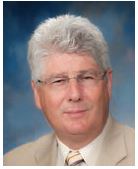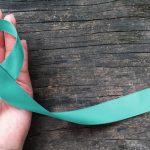Share
Veterans day is coming soon, so I want to thank the men and women who currently serve in US military as well as those who served in the past. As US citizens we should appreciate veterans for their service to our country regardless of whether or not they served in combat. Unfortunately, combat veterans get wounded, disabled, or suffer from posttraumatic stress disorder (PTSD), other psychiatric conditions, and/or substance use disorders (SUDs). Some veterans struggle when they return to civilian life and need professional help for these or other conditions.
A Personal Note
I am proud that four of my family members served during World War II (WWII). My father was a machine gunner wounded in the Pacific at age twenty-two. My mother’s brother was killed in combat three days after his twenty-first birthday in France, and he is buried in Normandy. During the Vietnam era, my older brother and I both served overseas. He was separated from his wife and daughter for two years during his assignment.
The Heroism of Soldiers and Civilians
A friend and I discovered that both of our fathers were wounded in New Guinea during WWII. His father heard a wounded soldier call for help and risked his life to rescue him. When his father was carrying the soldier, a grenade exploded and wounded him. However, due to his unselfish heroism, he got his wounded comrade to safety. There are many stories of heroism among soldiers who risked their lives to help other soldiers.
European and Asian citizens placed their lives in jeopardy by being part of a resistance movement, hiding soldiers, nurturing wounded soldiers back to health, hiding Jewish people or others at risk of being sent to concentration camps. Lynne Olson, in her audiobook Unsung Heroes of World War II: Europe, suggests that we look beyond the battles of war and meet “Ordinary people who made an extraordinary impact on WWII” (2020). The Diary of Anne Frank (Frank, 1947/1995) and Anne Frank Remembered (Giep & Gold, 1987/2009) convey the heroism of Mies Giep and her husband, who hid the Franks and other families from the Germans for over two years. They did this at the risk of being caught and executed.
The Harm of War to Families and Innocent Victims
One of the biggest travesties during WWII was the Holocaust, which led to the death of millions of innocent men, women, and children. A ninety-two-year-old Jewish friend of mine, who recently passed away, survived both the Holocaust and a death march in 1945. He defied the odds of being caught and executed on the spot and ran away during this death march. Russian soldiers found him unconscious and saved his life. Elie Wiesel provides a brilliant and chilling description of a death march in his book Night (1956/2006). He and his father were on this march together, but his father did not survive. This was devastating to Wiesel.
There are many individual stories of civilians harmed by war. Some ended in tragedy while others involved unimaginable resilience. Kim Phuc is the nine-year-old girl in the iconic 1972 photo who ran naked down a road in Vietnam after being burned badly by a napalm bomb. In her book, Fire Road: The Napalm Girl’s Journey through the Horrors of War to Faith, Forgiveness, and Peace, she talks about enduring chronic pain, deep depression, suicidality, over twenty surgeries, and exploitation by the Vietnam government (Kim & Phan, 2017). She uses these experiences and becoming a Christian to raise awareness of the impact of war on civilians and children. Kim moved from hatred and despair to love and forgiveness. Her story shows her resilience and belief in the goodness of people.
Japanese civilians who survived the atomic bombs dropped in Hiroshima and Nagasaki—people referred to as hibakusha, literally meaning “bomb-affected people” (“Who Are,” n.d.)—experienced awful physical and psychological effects. Many of these innocent victims were rejected by fellow citizens and did not always receive the medical or psychological help and support they needed. The books Hiroshima by John Hersey (1973) and Fallout: The Hiroshima Cover-Up and the Reporter Who Revealed it to the World by Lesley Blume (2021) provide incredible personal stories and insights about these individuals and others who survived the atomic bombs.
Grief over Losing a Loved One
While 20 to 25 million soldiers from all countries died during WWII, greater numbers of civilians died from execution in concentrations camps, starvation, diseases, or the bombing of towns and cities (“Research starters,” n.d.). Losing a loved one in combat is a traumatic and life-changing experience for loved ones. On August 15, 1944, my grandmother received a telegram that her son Thomas was “killed in action” three days after his twentieth birthday. In a letter she wrote months later, she stated, “No one knows what this does to you. . . . you can’t believe your child is dead, that such a thing could happen.” She later received a letter of condolence from General George S. Patton, who conveyed his appreciation of her son—and other young men and women who sacrificed their lives—and all the mothers who lost sons or daughters in the war.
During wars, many families lose their homes, money, and possessions. Many also lose stability in their daily lives, and some even lose their freedom. When my Jewish friend was twelve years old and returned home from school, his parents and siblings were gone. They were taken to concentration camps, where they later perished. He was imprisoned in a local jail as a young teenager before being sent to Auschwitz. It is hard to imagine what it was like for him to lose his family and his freedom at the same time.
When Anne Frank’s father Otto returned home to the Netherlands after the war, he discovered that his wife and two daughters did not survive the concentration camps (“Otto Frank,” n.d.). We cannot even fathom the intense pain and grief he experienced in learning all members of his family were killed.
The bombing of Japan that led to the end of WWII killed over 100,000 innocent civilians who were going about their daily lives (Wellerstein, 2020). Within a few minutes, survivors lost family members, friends, homes, communities, and their sense of safety.
The Physical and Psychological Wounds of Wars
I believe that my father’s postwar decades of alcoholism and psychiatric illness were partially caused by his combat experiences. Fortunately, he got sober and stable at age sixty-six and died with fourteen years of sobriety and psychiatric stability.
Early in my career, I was a social worker in a veteran’s affairs (VA) medical center in a treatment program for veterans with SUDs, many of whom had co-occurring psychiatric disorders. Their family members also suffered, as some were exposed to unpredictable behavior or violence associated with their loved ones’ SUDs and violent behaviors. My colleagues and I provided family services for years because we believed it was important for the families of veterans to receive help and support for what they were going through.
Suicide Among Veterans
Later in my career, I assumed several roles in the VA Mental Illness Research, Education, and Clinical Center (MIRECC). One role was to visit veterans discharged from the hospital as part of a suicide-prevention project. The 2019 National Veteran Suicide Prevention Annual Report showed that the suicide rate for veterans was 1.5 times the rate of nonveteran adults (VA, 2020). This report also stated, “One suicide is heartbreaking, notably affecting an estimated 135 surviving individuals for each death by suicide” (VA, 2020). The VA developed MIRECC projects throughout the US to provide conduct studies and provide clinical care to veterans with psychiatric disorders and/or SUDs.
Immigration
Millions of civilians are displaced due to war. Some immigrate to other countries while others end up in refugee camps where medical care is limited or lacking, disease is rampant, and life is difficult. My Jewish friend who survived the Holocaust and came to America as a young man had to learn English and a skill to support himself. His is one of many amazing stories of resilience, and like other wartime survivors he later in life shared his story at schools and with community groups. I had him share his experiences to psychiatric residents and patients in our treatment programs who were moved by his story of survival and resilience.
Reconciliation
Soldiers who fought each other sometimes meet years later to make peace through reconciliation. The last episode of PBS’s The Vietnam War series by Ken Burns and Lynn Novick showed ex-US soldiers returning to Vietnam and meeting ex-Vietnamese soldiers (Ward, Burns, & Novick, 2017). It was a moving encounter between people who had, at one time, been enemies. They embraced each other as friends.
Helping Our Veterans and Families
We can help veterans and their families by:
- Increasing our understanding of war and military service
- Linking them to VA services when needed and available
- Facilitating treatment from substance use, psychiatric, or co-occurring disorders in non-VA programs when appropriate
- Facilitating recovery in mutual-aid programs
- Always considering the impact of veterans’ conditions on their families and helping them access VA and/or other community services
While the VA helps large numbers of veterans, other community services are needed to address their multiple needs and aid their adjustment after military service.
References and Suggested Readings
- Blume, L. M. M. (2021). Fallout: The Hiroshima cover-up and the reporter who revealed it to the world. New York, NY: Simon and Schuster.
- Frank, A. (1947/1995). The diary of a young girl: The definitive edition (S. Massotty, Trans.). New York, NY: Doubleday. (Original work published 1947).
- Gies, M., & Gold, A. L. (1987/2009). Anne Frank remembered: The story of the woman who helped to hide the Frank family. New York, NY: Simon & Schuster.
- Hersey, J. (1973). Hiroshima. New York, NY: Penguin Books.
- Kim, P., & Phan, T. (2017). Fire road: The napalm girl’s journey through the horrors of war to faith, forgiveness, and peace. Carol Stream, IL: Tyndale Momentum.
- Olson, L. (2020). Unsung heroes of World War II: Europe [Audible audiobook]. Retrieved from https://www.amazon.com/Unsung-Heroes-World-War-II/dp/B08KTNTQRW
- “Otto Frank.” (n.d.). Retrieved from https://www.annefrank.org/en/anne-frank/main-characters/otto-frank/
- “Research starters: Worldwide deaths in World War II.” (n.d.). Retrieved from https://www.nationalww2museum.org/students-teachers/student-resources/research-starters/research-starters-worldwide-deaths-world-war
- US Department of Veteran’s Affairs (VA). (2020). 2019 national veteran suicide prevention annual report. Retrieved from https://www.mentalhealth.va.gov/docs/data-sheets/2019/2019_National_Veteran_Suicide_Prevention_Annual_Report_508.pdf
- Ward, G. C. (Writer), Burns, K., & Novick, L. (Directors). (2017). The Vietnam War [Television series]. In S. Botstein and K. Burns (Producers). Arlington County, VA: Public Broadcasting Service.
- Wellerstein, A. (2020). Counting the dead at Hiroshima and Nagasaki. Retrieved from https://thebulletin.org/2020/08/counting-the-dead-at-hiroshima-and-nagasaki/
- “Who are the hibakusha?” Retrieved from https://hibakushastories.org/who-are-the-hibakusha/
- Wiesel, E. (1956/2006). Night (M. Wiesel Trans.). New York, NY: Hill & Wang.

Dennis Daley, PhD
Dennis C. Daley, PhD, served many roles at the University of Pittsburgh School of Medicine. He is the author of many articles, treatment manuals, books, and guides for families and children affected by addiction. He helped facilitate B2H programs at two hospitals.











 Counselor Magazine is the official publication of the California Association of Addiction Programs and Professionals (CCAPP). Counselor offers online continuing education, article archives, subscription deals, and article submission guidelines. It has been serving the addiction field for more than thirty years.
Counselor Magazine is the official publication of the California Association of Addiction Programs and Professionals (CCAPP). Counselor offers online continuing education, article archives, subscription deals, and article submission guidelines. It has been serving the addiction field for more than thirty years.